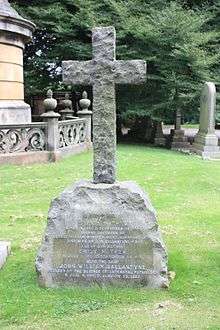John William Ballantyne



Dr John William Ballantyne FRSE FRCPE (4 June 1861 – 23 January 1923) was a Scottish physician and obstetrician. In his teaching of female doctors he was a pioneer in the advancement of female professional training in the field of medicine. He made major advances in the field of midwifery in the late 19th and early 20th century, with influences still felt today. He founded the science of antenatal pathology.
Life
He was born in Eskbank near Dalkeith, the son of John Ballantyne, a nurseryman and seedsman, and Helen Pringle Mercer.
He attended school at George Watson’s College in Edinburgh and thereafter (1880-1889) studied Medicine at Edinburgh University, serving as a midwifery assistant in his final years.
In 1889 he married Emily Rosa Mathew (d.1914).
In 1890 he took on an important role of lecturer in Midwifery and Gynaecology at the newly created Edinburgh School of Medicine for Women. He held this role until 1916. From 1894 to 1900 he also lectured in parallel at Edinburgh University on the subject of Antenatal Pathology and Teratology.[1]
In 1892 he was elected a Fellow of the Royal Society of Edinburgh.
In 1904 he took the role of Chief Physician at Edinburgh Royal Infirmary.[2]
He is listed in the 1908-9 Edinburgh Post Office Directory as living at 24 Melville Street in Edinburgh's fashionable west end.[3]
He died in Edinburgh, immediately following the removal of a gangrenous appendix. The British Medical Journal devoted a full four pages of his merits to the profession within his obituary[4]
He is buried with his wife, Rosa Mathew (d.1914) in Dean Cemetery in the west of Edinburgh. The grave stands just north of the huge Buchanan monument in the south-west section.
Publications
- Diseases and Deformities of the Foetus (2 volumes) (1892 and 1895)
- Teratogenesis (1897)
- Manual of Antenatal Pathology and Hygiene (1902-5)
References
- ↑ http://www.royalsoced.org.uk/cms/files/fellows/biographical_index/fells_indexp1.pdf
- ↑ http://www.nls.uk/catalogues/online/cnmi/inventories/acc13189.pdf
- ↑ https://archive.org/stream/postofficeedinbu19081909edin#page/n69/mode/2up
- ↑ Dunn, PM (1993). "Dr John Ballantyne (1861-1923): perinatologist extraordinary of Edinburgh". Arch. Dis. Child. 68: 66–7. doi:10.1136/adc.68.1_spec_no.66. PMC 1029174
 . PMID 8439205.
. PMID 8439205.
External links
- Works by or about John William Ballantyne at Internet Archive
- http://www.whonamedit.com/doctor.cfm/662.html
- Dunn, PM (1993). "Dr John Ballantyne (1861-1923): perinatologist extraordinary of Edinburgh". Arch. Dis. Child. 68: 66–7. doi:10.1136/adc.68.1_spec_no.66. PMC 1029174
 . PMID 8439205.
. PMID 8439205.